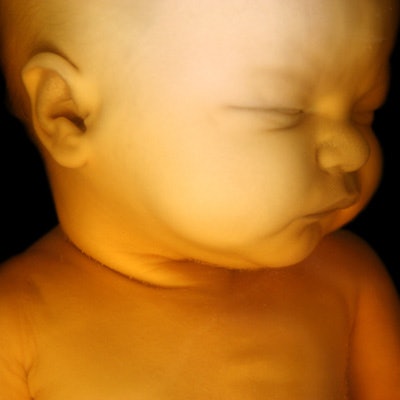
Gadolinium has been under the microscope for safety concerns in contrast imaging, but a study published October 11 in the American Journal of Obstetrics and Gynecology found evidence that says otherwise when it comes to imaging pregnant women.
Researchers led by Almut Winterstein, PhD, of the University of Florida found no significant ties between gadolinium-based contrast agents (GBCAs) in MRI and risk of fetal or neonatal death, but rather similar rates of death and admission into the neonatal intensive care unit (NICU) between gadolinium and nongadolinium study groups.
"This study does not corroborate emerging safety concerns related to prenatal exposure to MRI with GBCAs and risk of fetal and neonatal death or need for neonatal intensive care unit admission," Winterstein told AuntMinnie.com.
GBCAs enhance MRI images, but manufacturers warn about the risk of developing nephrogenic systemic fibrosis (NSF) among patients with impaired kidney function. Experts also express concern about gadolinium's effects on the brain, skin, and other organs in otherwise healthy patients, and current guidelines discourage the use of GBCAs during pregnancy, as gadolinium can cross the placenta and accumulate in the fetal kidney and liver.
The researchers sought to explore concerns on GBCA safety in MRI during pregnancy, their effects on fetal or neonatal death, and neonatal ICU admission. They conducted a study that consisted of data from 5,991 Medicaid-covered pregnancies recorded between 1999 and 2014 and included both stillborn and liveborn deliveries. Out of the total, 782 pregnant women underwent GBCA-MRIs and 5,209 underwent MRIs without the contrast.
| Comparison of death rates and NICU admission in fetal/neonatal population among pregnancies with and without GBCA-MRIs | ||
| Measure | Non-GBCA pregnancies | GBCA pregnancies |
| Death rate | 73 (1.4%) | 11 (1.4%) |
| NICU admission within seven days | 8.8% | 7.7% |
| Median gestational age at time of stillbirth | 30 weeks | 32 weeks |
The unadjusted relative risk of fetal/neonatal death comparing GBCA versus non-GBCA-MRI exposure was 1.00, according to the team. After applying standardized mortality/morbidity ratio weighting, the group reported no significantly increased risk of fetal death and an adjusted absolute risk difference of -48 cases per 10,000 pregnancies with GBCA-MRI. Similar adjusted risk ratios were found when the predicted gestational age was shortened or lengthened.
While Winterstein and colleagues' results focused on only potential acute severe effects of GBCAs, they called for limited gadolinium use during pregnancy and in accordance with professional society guidelines.
"Considering gadolinium retention in various tissues, the impact on subacute and chronic adverse outcomes in infants warrants further evaluation," they concluded.




.fFmgij6Hin.png?auto=compress%2Cformat&fit=crop&h=100&q=70&w=100)




.fFmgij6Hin.png?auto=compress%2Cformat&fit=crop&h=167&q=70&w=250)











